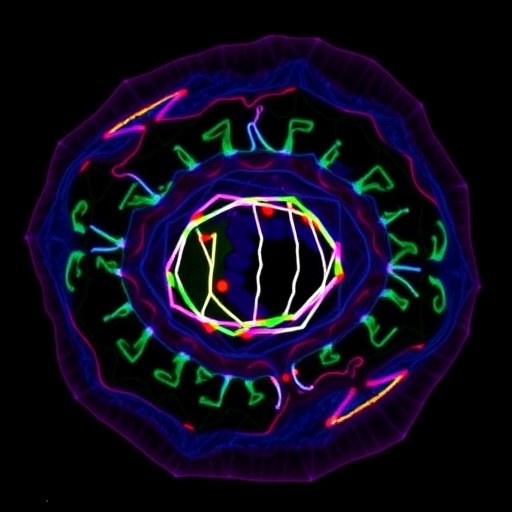The exploration of aza-heterocyclic compounds has gained significant momentum in the realm of virology, primarily due to their promising antiviral properties. Recent advancements in the synthesis and functionalization of these compounds have revealed their potential in combating a variety of viral pathogens. The current review highlights the mechanisms by which aza-heterocycles exert their antiviral effects, underscoring their viability as candidates for novel therapeutic agents. This discussion will encompass recent findings in the structure-activity relationships (SAR) associated with these compounds, demonstrating how modifications in their chemical structure can enhance their biological efficacy.
Viral infections continue to pose a formidable threat to global health, necessitating an urgent need for effective antiviral therapeutics. The emergence of resistance to existing antiviral agents adds another layer of complexity to the management of viral diseases. In response, researchers are turning their attention to aza-heterocyclic compounds, which have shown considerable promise in inhibiting viral replication. These compounds, characterized by a nitrogen atom incorporated into a heterocyclic ring, display diverse pharmacological activities, including antiviral, antimicrobial, and anticancer properties.
One of the focal points of modern antiviral research is the exploration of the varied mechanisms through which aza-heterocycles disrupt viral life cycles. For instance, studies have demonstrated that specific aza-heterocycles can inhibit viral entry into host cells, thereby preventing infection at the initial stages. These compounds may interact with viral proteins or host cell receptors, effectively blocking the pathways necessary for viral attachment and entry. Such mechanistic insights pave the way for the design of targeted antiviral agents that mitigate the risk of viral propagation within the host.
In addition to inhibiting viral entry, aza-heterocycles have also been shown to interfere with viral replication processes. Once inside the host cell, viruses rely on their replication machinery to propagate. Certain aza-heterocyclic compounds inhibit key enzymes such as RNA-dependent RNA polymerase or reverse transcriptase, crucial for viral genome replication. This type of intervention not only curtails the viral load but also aids in modulating the host immune response, a critical factor in managing viral infections effectively.
The synthesis of aza-heterocycles has evolved to facilitate the incorporation of various substituents that can significantly influence their antiviral activity. Researchers have employed diverse synthetic methodologies, including one-pot reactions and multicomponent reactions, to produce a wide array of compound libraries. Each of these compounds can be screened for antiviral properties, allowing for the identification of lead candidates with optimal pharmacodynamic profiles. Recent advancements in high-throughput screening methods have accelerated the discovery process, enabling scientists to evaluate compound efficacy against a range of viral strains rapidly.
The structural diversity of aza-heterocycles also contributes to their versatility as antiviral agents. Variations such as changes in ring size, electron-withdrawing or donating groups, and stereochemistry can dramatically influence their bioavailability and potency against specific viral targets. Moreover, computational studies are increasingly being utilized to predict the interactions between aza-heterocycles and viral proteins, assisting in the rational design of more effective antiviral compounds. This facet of drug development emphasizes the integration of computational chemistry with traditional synthetic approaches to enhance the discovery pipeline.
Despite the promising data surrounding aza-heterocycles, challenges remain in translating these findings into clinically viable therapies. The path from laboratory to bedside is often fraught with obstacles, including toxicity concerns, pharmacokinetic limitations, and issues related to solubility and formulation. Understanding these parameters is crucial for the successful development of aza-heterocyclic compounds as antiviral agents. Researchers must prioritize the optimization of drug-like properties while maintaining or enhancing antiviral efficacy in their ongoing studies.
The implications of aza-heterocycles extend beyond their immediate antiviral activity; they may also play a role in addressing viral mutations and resistance. As viruses mutagenize frequently, the development of broad-spectrum antivirals capable of targeting conserved viral mechanisms is critical. Aza-heterocycles, with their ability to engage multiple targets within the viral replication cycle, hold significant promise in this regard. Ongoing studies are examining the potential of these compounds to synergize with existing antiviral therapies, thereby lowering the chances of resistance development while maximizing therapeutic outcomes.
Furthermore, researchers are increasingly investigating the potential of aza-heterocycles in treating emerging viral threats. As new viruses emerge, such as those responsible for outbreaks of zoonotic diseases, the urgent need for rapid responses through effective antiviral strategies has never been clearer. The agility of aza-heterocyclic compounds in adapting to target new viral entities makes them prime candidates for future drug development efforts directed toward novel infectious diseases.
In conclusion, the advancements in the antiviral activity of aza-heterocyclic compounds represent a pivotal area of research with the potential to reshape antiviral therapeutic strategies. As scientists continue to delineate the intricate relationships between structure and activity, the hope is that these compounds will form the foundation of a new generation of antiviral medications. The synthesis, optimization, and evaluation of aza-heterocycles exemplify the collective pursuit of innovative solutions to combat the relentless threat posed by viral infections. The path forward is marked by collaboration across disciplines, merging medicinal chemistry, virology, and computational modeling to pave the way for breakthrough treatments.
Through continued research and development, the line between laboratory findings and clinical applications will hopefully blur, allowing aza-heterocycles to fulfill their promise as effective antiviral agents in combating current and emerging viral diseases.
Subject of Research: Advances in antiviral activity of aza-heterocyclic compounds
Article Title: Advancements in antiviral activity of aza-heterocyclic compounds: a review.
Article References:
Ameziane El Hassani, I., Karrouchi, K. & Ansar, M. Advancements in antiviral activity of aza-heterocyclic compounds: a review.
Mol Divers (2025). https://doi.org/10.1007/s11030-025-11355-8
Image Credits: AI Generated
DOI:
Keywords: Antiviral compounds, Aza-heterocycles, Viral infections, Medicinal chemistry, Structure-activity relationships, Drug development
Tags: antiviral properties of aza-heterocyclesaza-heterocycles in antiviral researchcombating viral infections with aza-heterocyclesinhibiting viral replication with aza-heterocyclesmechanisms of antiviral actionnovel therapeutic agents for viral diseasespharmacological activities of aza-heterocyclespotential of aza-heterocycles in global healthresistance to antiviral agentsstructure-activity relationships in antiviral agentssynthesis of aza-heterocyclic compoundsvirology breakthroughs in drug development





